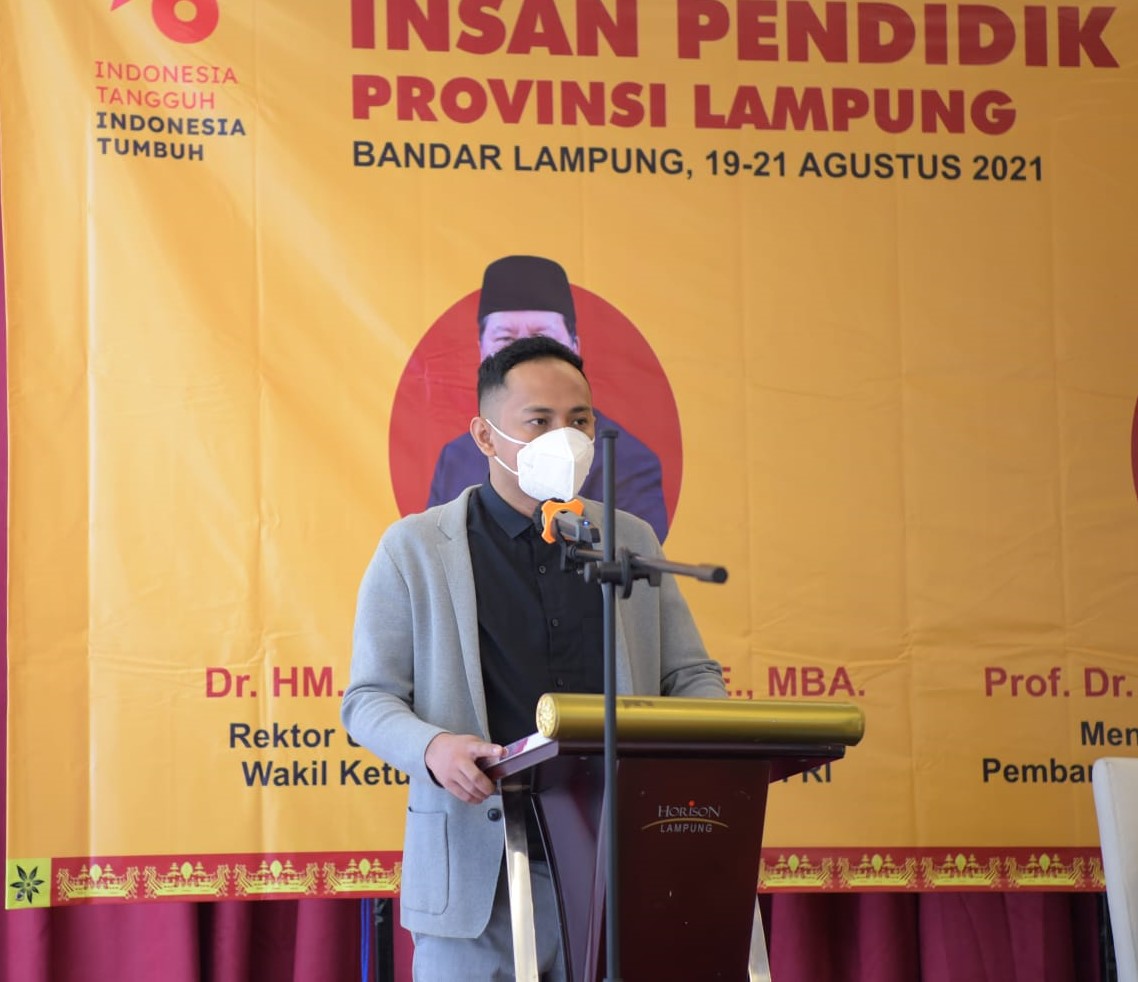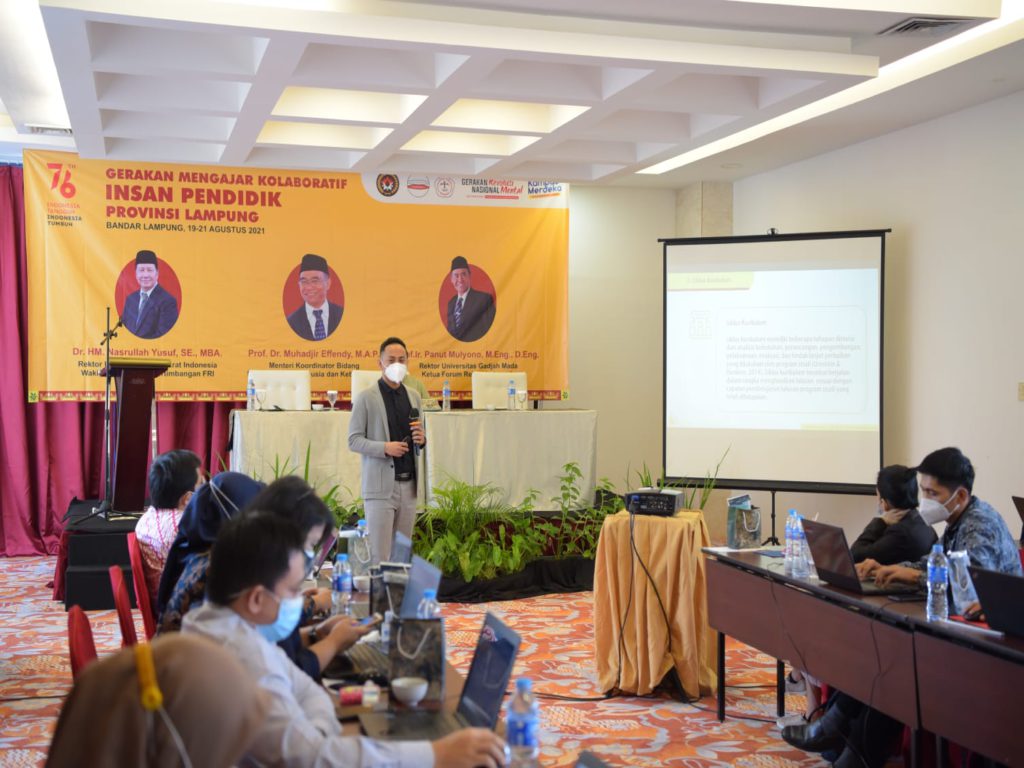
Recently, the New Paradigm Curriculum is often discussed by educators throughout the country. Principals, teachers, and school supervisors are incessantly working hand in hand to make the implementation of the new Paradigm Curriculum successful. Workshops, trainings, and seminars are often held at the education unit level, starting from the PAUD/TK level to the high school level. What exactly is the New Paradigm Curriculum? And how did the term come about recently? Let’s review in full the Background, Definition, and Principles of the New Paradigm Curriculum.
.
The implementation of the New Paradigm Curriculum was motivated by the launch of the Driving School Program in 2021 by the Minister of Education and Culture of the Republic of Indonesia, Nadiem Makarim. The Motivating School Program is designed as a driver for improving the quality of education in Indonesia. In implementing this program, a curriculum was developed that perfected the previous education system so that all educational policies really focused on increasing the content of the learner-centered learning process. This curriculum is also based on the spirit and philosophy of Ki-Hajar Dewantara’s education in which schools must be able to create students who are independent, happy, empowered, and have higher motivation to learn and study. Improving the competence of principals and teachers as the spearhead of education is a major concern in implementing this curriculum. In addition, along with the development of information technology and the Industrial Revolution 4.0 globally, this curriculum also regulates the use of technology and information in learning. This curriculum became known as the New Paradigm Curriculum.
.

What is the meaning of the New Paradigm Curriculum? Before we discuss further about the new Paradigm Curriculum, let’s look at the general meaning of the curriculum. The curriculum comes from the word “currir” which means runner and “currer” which means a place to race in Greek. Curriculum is generally defined as a set of arrangements that regulate planning, objectives, content and materials and methods used as a reference for the implementation of learning in order to achieve an educational goal. The New Paradigm Curriculum is a curriculum that enhances current education by further improving the quality of the process and learning outcomes of students leading to the achievement of the six dimensions of the Pancasila Student Profile, namely, Faith and Faith in God Almighty, Noble Morals, Global Diversity, Mutual Cooperation, Critical Reasoning , Independent, and Creative. The New Paradigm curriculum which strongly encourages character strengthening is not only focused on improving hard skills but also soft skills as a whole.
Also Read: Technocrat Lecturer Gives Training on Preparation of Mobile-Based Learning Devices for SMAN 5 Bandarlampung Teachers
.
In implementing the learning process, the New Paradigm Curriculum puts forward the principles of differentiated learning and teaching at the right level (TeRL) referring to learner-centered learning. Characteristics that provide a touch of refinement to the previous curriculum can be found at each level of the education unit. These characteristics can be seen from the PAUD/TK level to the SMA/SMK level. Let’s look at the characteristics of the New Paradigm Curriculum as follows:
.

At the PAUD level, known as the Foundation Phase, learning objectives are formulated from the results of the analysis of learning outcomes. In addition, learning objectives must be determined more specifically referring to the level of student development and also referring to the context of the surrounding environment. At this level, the intracurricular activities are merged into one with the Pancasila Student Profile Strengthening activity which is an integral part. In terms of learning methods, each teacher has the opportunity to design and design activity objectives for daily/weekly learning by referring to the learning objectives that have been determined in the school’s operational curriculum. Teachers can apply various teaching techniques and strategies in the context of playing, using various instruments, especially authentic assessments in measuring the achievement of learning objectives. At the unit level, schools have the opportunity to report learning outcomes either every 6 months or every 3 months.
.
At the elementary school level (Phases A, B and C), Natural Sciences and Social Sciences subjects are combined into Natural and Social Sciences or commonly abbreviated as IPAS. Just like at the PAUD level, learning objectives are formulated from the results of the analysis of learning outcomes that refer to the level of student development and also refers to the context of the surrounding environment. In contrast to the PAUD level, the Pancasila Student Profile Strengthening activity is a separate part of the intracurricular activities. In terms of developing teaching strategies, every teacher has the right to design and design learning in accordance with the learning objectives that have been determined in the school’s operational curriculum. Teachers can apply various techniques in assessment according to learning objectives.
.
At the Junior High School level (Phase D), if previously ICT subjects were abolished, in this new curriculum the Informatics subject becomes a compulsory subject to be taught at the SMP level. The process of formulating learning objectives is also analyzed from learning outcomes that refer to the level of student development and also refers to the environmental context. Just like elementary school, the Pancasila Student Profile Strengthening activity is a separate part of the intra-curricular activities. At this stage, every teacher has the right to design and design learning in accordance with the learning objectives that have been determined in the school’s operational curriculum. Teachers can apply various techniques in assessment according to learning objectives.
.
The characteristic that can be found at the high school level is that the specialization that previously started in grade 10 (Phase E) was changed again starting from grade 11 (Phase F). The process of formulating learning objectives is also analyzed from learning outcomes that refer to the level of student development and also refers to the environmental context. Not unlike elementary and junior high schools, Pancasila Student Profile Strengthening activities are a separate part of intracurricular activities. The development of learning and assessment strategies for each teacher is designed flexibly according to the learning objectives and refers to the achievement of the Pancasila Student Profile. Teachers can apply various techniques in assessment such as exams, portfolios, performance and so on according to learning objectives.
Read also: Best PTS Lecturers and Students from Sumatra, Universitas Teknokrat Indonesia Accompany Hybrid Learning at SMAN 1 Gedongtaaan
In conclusion, the New Paradigm Curriculum ensures the learning process is learner-centred. It can be seen that there is a change in previously known terms from Core Competencies and Basic Competencies to Learning Outcomes and Learning Objectives. In addition, the New Paradigm Curriculum provides flexibility for educators to formulate learning and assessment designs according to the characteristics of students. Learning in the New Paradigm Curriculum is also structured and directed to achieve the Pancasila Student Profile which is expected to create a generation of intelligent, skilled, and noble human beings in accordance with the hopes and ideals of the National Education System.